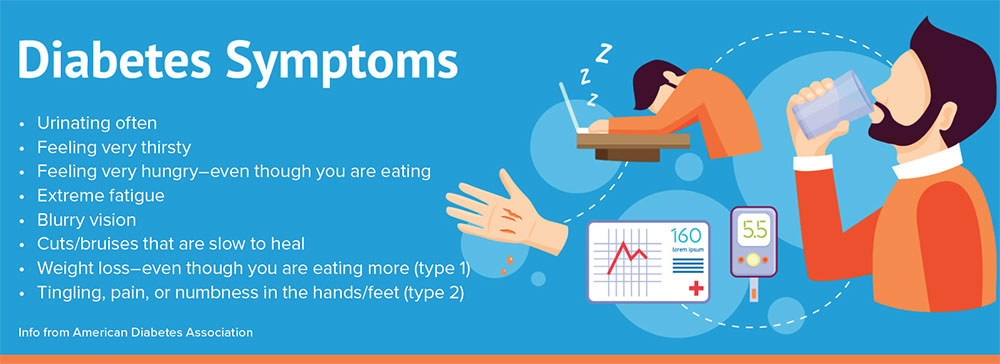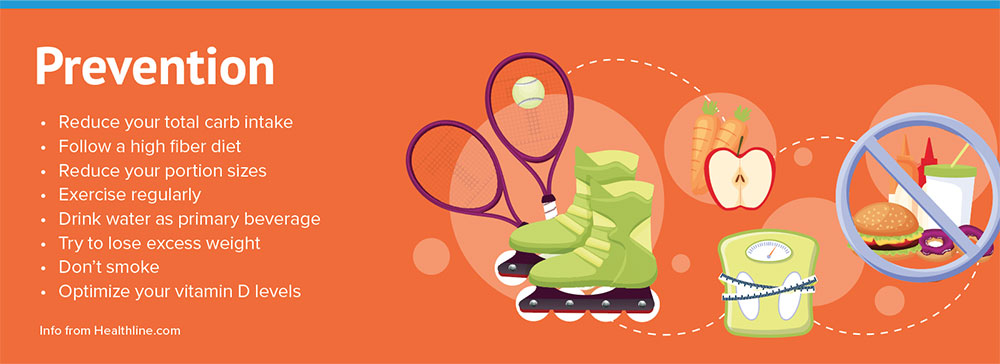In 2019, 37.3 million Americans, or 11.3% of the population, had diabetes. 1.4 million Americans are diagnosed with diabetes every year. 96 million Americans, age 18 and older, had prediabetes in 2019. Diabetes is the 7th leading cause of death in the U.S.¹ Such statistics enable one to understand the importance of increasing diabetes awareness and prevention.

It is often difficult to know what is and isn’t true about diabetes. The following Myth vs. Truth list will help to dispel some of the more common myths about diabetes.
MYTH: Individuals with diabetes must eat specific diabetic foods.
TRUTH: While it is not necessary for people with diabetes to eat special foods, it is important for them to maintain a healthy diet by eating healthy fats, fruit, lean protein, non-starchy vegetables, and whole grains. It is also important for them to avoid foods with trans-fat, high salt, and high-sugar content.
MYTH: Diabetes is not a serious condition.
TRUTH: Diabetes is a very serious disease and takes more lives than AIDS and breast cancer combined. Diabetes also doubles the risk of heart attacks.
MYTH: Being overweight always leads to diabetes.
TRUTH: Being overweight or obese is a risk factor for diabetes, but other risk factors exist as well, such as age, family history, and ethnicity.
MYTH: Consuming excess sugar causes diabetes.
TRUTH: Type 1 diabetes is genetic and it is not fully understood what triggers it. Type 2 diabetes is genetic and is triggered by lifestyle factors. Research indicates that being overweight is a risk factor that increases one’s risk of diabetes. Other known risk factors include being overweight and consuming drinks with excessive sugar content, such as fruit punch/drinks, regular soda, energy/sports drinks, sweet tea, and other sugar-laden drinks.
MYTH: People with diabetes should only consume starchy foods in minimal amounts.
TRUTH: Portion size is instrumental when incorporating starchy foods into a healthy meal plan for people with diabetes. Starchy foods, such as whole grains, potatoes and peas that you can include in your diet. Additional starchy foods that can also be counted as carbohydrates include such foods as beans, yogurt, and fruits. The recommended number of carbohydrates varies by individual, but a general guideline is 45-60 grams of carbohydrates at each meal and 15-20 grams of carbohydrates at each snack.²
MYTH: Chocolate and other sweets cannot be eaten by individuals with diabetes.
TRUTH: Chocolate and other sweets can be eaten by individuals with diabetes if incorporated in extremely small portions on an infrequent basis and in combination with exercise; however, the key is to focus on healthy foods.¹
MYTH: People with diabetes can eat as much fruit as they like since it is so healthy.
TRUTH: Fruit is healthy, but it contains carbohydrates that converts to sugar, which is why it is important to know how much fruit you can eat without driving up your blood sugar.1
MYTH: If you have to use insulin it means you are doing a poor job of managing your diabetes.
TRUTH: Diabetes is a disease that progresses because the body makes less and less insulin over time and eventually requires insulin administration.
How is diabetes diagnosed?
Diabetes is diagnosed through blood tests. There are three types of blood tests that may be done to determine whether or not someone has diabetes. The three tests for diagnosing diabetes, or pre-diabetes, are the fasting plasma glucose, oral glucose tolerance, and glycosylated hemoglobin (A1C) tests.4 If a person’s blood sugar level is mildly elevated, more than one test may be necessary to diagnose diabetes, but if blood sugar values are significantly elevated, only one test is usually required.

How can I prevent diabetes and related complications?
1. Know and prevent the preventable risk factors of diabetes.
- Positive family history – unpreventable
- Advancing age – unpreventable
- Overweight/obesity – maintain a normal weight!
- Unhealthy diet, high intake of sugary drinks – follow a nutritious, healthy meal plan!
- Sedentary lifestyle – stay active!
It is important to get at least 150 minutes of moderate-intensity aerobic exercise each week. But a slow stroll won’t cut it. To benefit, you’ll need to work out at a moderate intensity – at this pace, you’ll be able to talk, but not sing.5
Contact your health care provider if you have diabetes to learn how you can safely integrate a routine exercise program into your life without dropping your blood sugar too low.
2. Know and report symptoms of diabetes to your doctor or primary care provider.3
- Excessive thirst
- Frequent urination
- Excessive hunger, even while eating
- Extreme fatigue
- Slow-healing wounds
- Blurred vision
- Numbness, tingling, and/or pain in hands/feet
- Unintentional weight loss (type 1 diabetes)
3. Visit your doctor or primary care provider for annual wellness exams and preventive screenings.
4. If you have diabetes, stay active, eat healthy, and be as compliant as possible with your diabetes treatment regimen.
©2022HealthSpot References: (1) American Diabetes Association. (2022). https://diabetes.org/about-us/statistics/about-diabetes (2) American Diabetes Association. (2009). All about carbohydrate counting. Retrieved from https://professional.diabetes.org/sites/professional.diabetes.org/files/media/All_About_Carbohydrate_Counting.pdf (3) American Diabetes Association. (2022). Diabetes symptoms. Retrieved from http://www.diabetes.org/diabetes-basics/symptoms/?loc=db-slabnav (4) American Diabetes Association. (2022). Diagnosing diabetes and learning about prediabetes. Retrieved from http://www.diabetes.org/diabetes-basics/diagnosis/?loc=symptoms (5) American Diabetes Association. (2022). https://diabetes.org/healthy-living/fitness/weekly-exercise-targets

